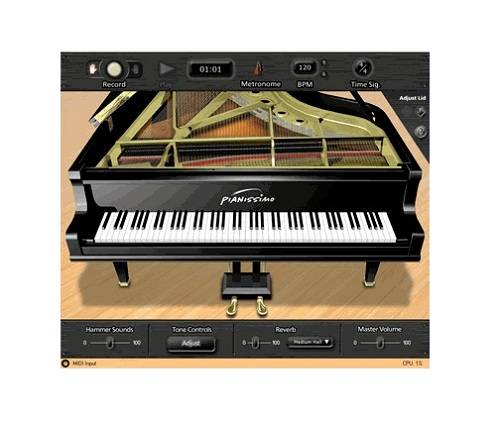
However, this isn't always something that is possible, so when it's not Ivory would definitely be my first choice for a virtual piano. The price is definitely reasonable, as it isn't too expensive but also isn't dirt cheap. It's definitely worth it if you're going to be using a virtual piano a lot, as in my opinion you're getting the closest thing to a real piano in the digital world. Pianissimo virtual piano is a must have more anyone putting together a virtual suite of instruments. I post a review Pianissimo because it is contrary to previous opinion. Not that the previous opinion is wrong but it shows that we all have a very different perception of piano sounds and digital software.įor my part Pianissimo is the best compromise realism / playability of other apps mentioned by Ehma namely Pianoteq piano and True. When I try I find the True Piano sound pretty good but I closer to the sound of a digital piano as an acoustic piano. The setting options are excellent but in the end my ears can not find the sound credible. I can also compare it to the Garritan Steinway is superior in sound quality, very playable but can seem a bit "soft" live.īy Pianissimo against satisfies me for the feeling of realism it gives me. Once you've made a recording, you can save it as a MIDI file using the File->Save MIDI File command, or save your recording as an MP3 using the File->Mix Down To MP3 command.įor detailed information on Pianissimo's stand-alone controls, see Stand-Alone Host Controls. Use the Recording button to begin recording, and turn the metronome on and off with the large Metronome toolbar button. You can then select File->New to begin a new project. Try out the different presets, and have fun with it! You can also click on the virtual keys to play the piano sound. You can control the instrument via your MIDI keyboard controller. You can lower and raise the piano lid, adjust the tone controls, change the reverb amount and type, and more. You will hear a beautifully performed excerpt from Brahms Rhapsody.Īll of Pianissimo's controls will now be available. Select OK, and press the large Play button on the toolbar, or select Recording->Play from the main menu. Once your sound device is set up, select File->Load Midi File, and select Brahms Rhapsody Demo.mid. To adjust your audio device and latency settings, select File->Preferences.įor tips of reducing the latency of your audio device, see Important Sound Setup Information.
#ACOUSTICA PIANISSIMO VSTI.STANDALONE WINDOWS#
It will use your default audio device (in WaveRT mode for Windows Vista and up, and Wave mode for all versions of Windows prior to Vista). A Pianissimo loading screen will display during this time.īy default, Pianissimo in stand-alone mode can be controlled by any MIDI input. It may take up to a minute to load Pianissimo's sample data. Run Pianissimo, either using the Pianissimo desktop icon, or selecting the Start Menu in Windows and choosing All Programs->Acoustica Pianissimo->Pianissimo. įor information on registering Pianissimo, see Registration. Try out the different presets, and have fun with it!įor detailed information on Pianissimo's VSTi controls, see Pianissimo Controls. Use your DAW host to play back a MIDI file, or control the instrument via your MIDI keyboard controller.

Once the loading is complete, open the Editor window.Īll of Pianissimo's controls will now be available. A Pianissimo loading screen will display during this time. Pianissimo should show up as an available virtual instrument in your DAW. If your host does not automatically locate Pianissimo, search the Preferences for an option such as "Find New VST Plug-Ins," or consult your owner's manual. Most host programs (including Mixcraft) will automatically find any new plug-ins, including Pianissimo. Run your DAW host program (such as Mixcraft).

Here are some quick steps to getting Pianissimo up and running: Pianissimo is simple to use, and will generally function without any setup or configuration.


 0 kommentar(er)
0 kommentar(er)
